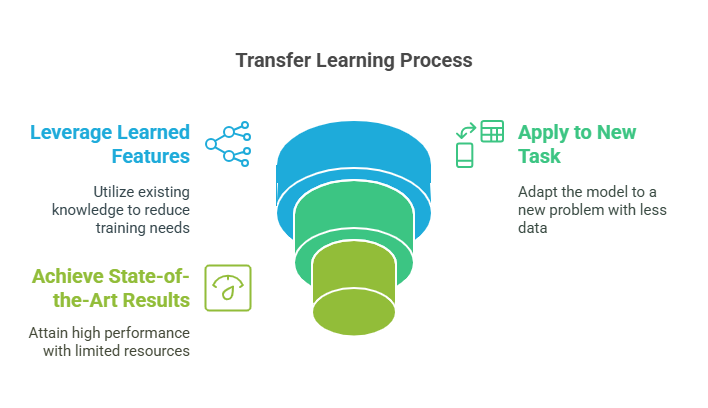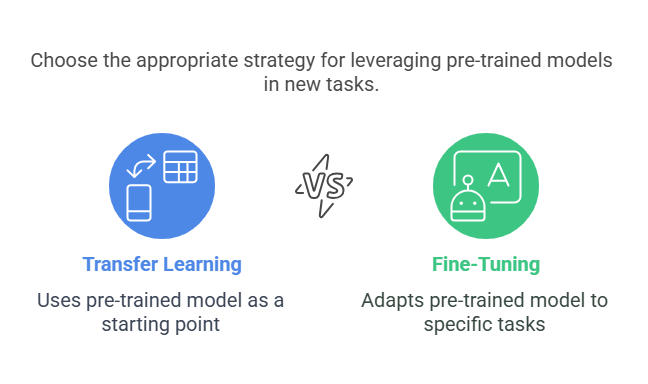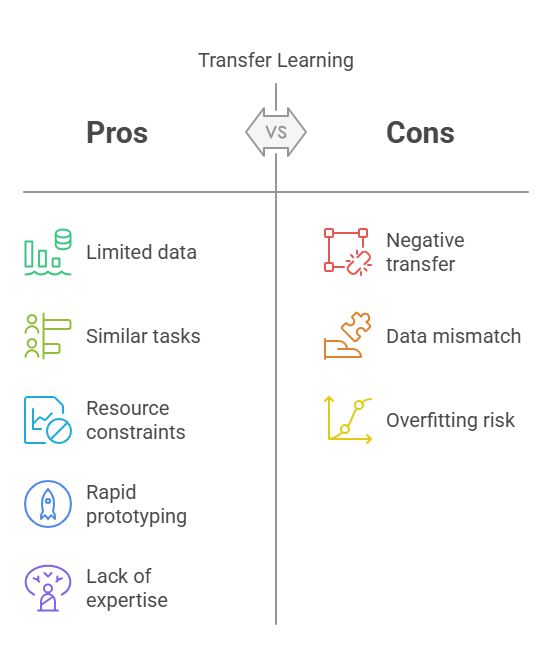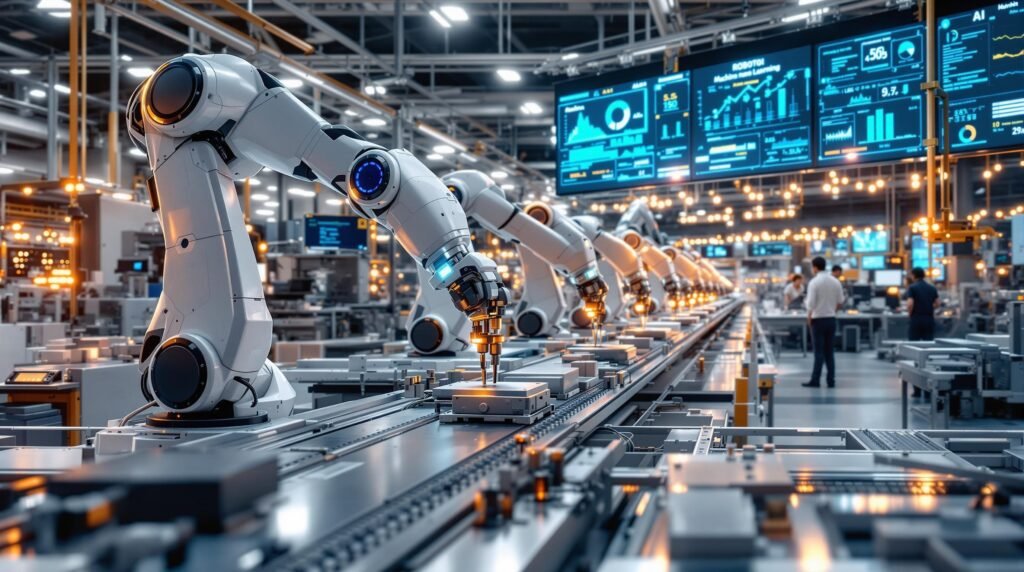Introduction to Transfer Learning
In recent years, transfer learning has become one of the most powerful techniques in the field of machine learning and artificial intelligence. Traditionally, building effective machine learning models required large amounts of labeled data and significant computational resources. However, transfer learning offers a way to leverage knowledge gained from one task and apply it to another, often with much less data and training time.
The core idea behind transfer learning is simple: instead of training a model from scratch for every new problem, we start with a model that has already learned useful features from a related task. This approach is especially valuable in domains where collecting and labeling data is expensive or time-consuming, such as medical imaging or natural language processing.
Transfer learning has revolutionized many areas of AI, enabling practitioners to achieve state-of-the-art results with limited resources. It is now a standard practice in computer vision, natural language processing, and even audio analysis.

What Are Pre-trained Models?
Pre-trained models are machine learning models that have already been trained on large datasets for specific tasks. For example, in computer vision, models like ResNet, VGG, or EfficientNet are often pre-trained on the ImageNet dataset, which contains millions of labeled images across thousands of categories. In natural language processing, models such as BERT, GPT, and RoBERTa are pre-trained on massive text corpora.
These models have learned to extract general features from data, such as edges and shapes in images or syntactic and semantic patterns in text. As a result, they serve as a strong foundation for solving new, related problems.
Using pre-trained models offers several advantages:
Reduced Training Time: Since the model has already learned useful representations, training on a new task is much faster.
Improved Performance: Pre-trained models often achieve better results, especially when the new dataset is small.
Lower Data Requirements: You can achieve good performance even with limited labeled data.
In practice, pre-trained models are widely available through popular machine learning libraries such as TensorFlow, PyTorch, and Hugging Face Transformers. They can be easily downloaded and integrated into your own projects, making transfer learning accessible to both beginners and experienced practitioners.
The Difference Between Transfer Learning and Fine-Tuning
While transfer learning and fine-tuning are closely related concepts, they refer to different stages in the process of leveraging pre-trained models for new tasks.
Transfer learning is the broader concept of using knowledge gained from one task to improve learning in another. In practice, this means taking a model that has already been trained on a large dataset and applying it to a new, often smaller, dataset. The pre-trained model serves as a starting point, providing general features that are useful for a wide range of tasks.
Fine-tuning, on the other hand, is a specific technique within transfer learning. It involves further training the pre-trained model on the new dataset, allowing the model to adapt its learned features to the specifics of the new task. Fine-tuning typically involves the following steps:
Freezing the base layers: Initially, the lower layers of the model (which capture general features) are kept unchanged, while only the top layers (which are more task-specific) are trained on the new data.
Unfreezing and retraining: After training the top layers, some or all of the base layers can be „unfrozen” and retrained with a low learning rate. This allows the model to fine-tune its representations to better fit the new task.
In summary, transfer learning is the process of reusing a pre-trained model, while fine-tuning is the process of adapting that model to a specific new task by additional training.

Advantages of Using Pre-trained Models
Utilizing pre-trained models through transfer learning and fine-tuning offers several significant advantages:
1. Faster Development and Training:
Since pre-trained models have already learned useful features from large datasets, you can skip the time-consuming process of training from scratch. This leads to much faster development cycles and reduced computational costs.
2. Improved Performance with Limited Data:
Pre-trained models are especially valuable when you have a small dataset. The knowledge embedded in the model allows it to generalize better, often resulting in higher accuracy and robustness compared to models trained from scratch on limited data.
3. Lower Resource Requirements:
Training deep learning models from scratch requires significant computational resources and large amounts of labeled data. By leveraging pre-trained models, you can achieve strong results even with modest hardware and smaller datasets.
4. Access to State-of-the-Art Techniques:
Many pre-trained models are based on cutting-edge architectures and have been trained on massive datasets by leading research teams. By using these models, you can benefit from the latest advances in machine learning without needing to invest in extensive research and development.
5. Versatility Across Domains:
Pre-trained models are available for a wide range of tasks, including image classification, object detection, text analysis, and more. This versatility makes them a valuable tool for practitioners in various fields.
In conclusion, using pre-trained models through transfer learning and fine-tuning not only accelerates the development process but also enables you to achieve high-quality results with fewer resources and less data.
When Should You Use Transfer Learning?
Transfer learning is not always the best solution for every machine learning problem, but it is especially effective in certain scenarios. Here are some situations where transfer learning is highly recommended:
Limited Data Availability:
If you have a small or moderately sized dataset, training a deep learning model from scratch can lead to overfitting and poor generalization. Transfer learning allows you to leverage knowledge from large datasets, improving performance even with limited data.
Similar Task Domains:
Transfer learning works best when the source task (the one the model was originally trained on) and the target task (your specific problem) are related. For example, a model pre-trained on general image classification (like ImageNet) can be effectively adapted to medical image analysis or object detection.
Resource Constraints:
Training large models from scratch requires significant computational power and time. Transfer learning enables you to build high-performing models with less computational effort, making it ideal for projects with limited resources.
Rapid Prototyping:
When you need to quickly develop and test machine learning solutions, transfer learning provides a fast way to achieve strong baseline results. This is particularly useful in research, startups, and proof-of-concept projects.
Lack of Expertise in Model Architecture:
Using pre-trained models allows you to benefit from state-of-the-art architectures developed by experts, even if you don’t have deep experience in designing neural networks.
In summary, transfer learning is most beneficial when you have limited data, related tasks, or resource constraints, and when you want to accelerate development without sacrificing performance.

Choosing the Right Base Model
Selecting the appropriate pre-trained model is a crucial step in the transfer learning process. The right choice depends on several factors:
Task Type:
Different pre-trained models are optimized for different tasks. For image-related tasks, popular choices include ResNet, VGG, EfficientNet, and MobileNet. For natural language processing, models like BERT, GPT, RoBERTa, and DistilBERT are widely used.
Domain Similarity:
The closer the source domain (the data the model was originally trained on) is to your target domain, the better the transfer learning results. For example, if your task involves medical images, a model pre-trained on general images is helpful, but a model pre-trained on medical images would be even better if available.
Model Size and Complexity:
Consider the computational resources available for both training and inference. Larger models like ResNet152 or GPT-3 offer high accuracy but require more memory and processing power. For deployment on mobile or edge devices, lightweight models such as MobileNet or DistilBERT are preferable.
Community Support and Documentation:
Models with strong community support, extensive documentation, and pre-built implementations in popular frameworks (like TensorFlow, PyTorch, or Hugging Face Transformers) are easier to integrate and troubleshoot.
Licensing and Usage Restrictions:
Always check the licensing terms of pre-trained models, especially for commercial projects. Some models may have restrictions on usage or require attribution.
Example:
If you are working on a sentiment analysis task, starting with a pre-trained BERT model is a good choice. For classifying plant diseases from leaf images, a pre-trained EfficientNet or ResNet model would be suitable.
In conclusion, carefully evaluating your task requirements and available resources will help you select the most effective base model for your transfer learning project.
The Process of Freezing and Unfreezing Layers
A key technique in transfer learning and fine-tuning is the strategic freezing and unfreezing of layers in a pre-trained model. This process allows you to control which parts of the model are updated during training, helping to balance the retention of learned features with adaptation to your specific task.
Freezing Layers:
When you „freeze” a layer, you prevent its weights from being updated during training. This is typically done for the early layers of a pre-trained model, as these layers capture general features (such as edges or textures in images, or basic word patterns in text) that are useful across many tasks. By freezing these layers, you preserve the valuable knowledge the model has already acquired.
Unfreezing Layers:
After training the new top layers (the „head” of the model) on your specific dataset, you may choose to „unfreeze” some of the previously frozen layers. This allows the model to fine-tune its internal representations, adapting more closely to the nuances of your data. Unfreezing is often done gradually, starting with the last few layers and moving deeper as needed.
Why Freeze and Unfreeze?
Prevent Overfitting: Freezing most layers reduces the risk of overfitting, especially when you have a small dataset.
Faster Training: Training fewer parameters speeds up the process and requires less computational power.
Better Generalization: By retaining the general features learned from large datasets, your model is more likely to generalize well to new data.
Typical Workflow:
Load a pre-trained model and freeze all or most of its layers.
Add and train new layers specific to your task.
Optionally, unfreeze some of the base layers and continue training with a lower learning rate.
This approach allows you to get the best of both worlds: leveraging powerful pre-trained features while adapting the model to your unique problem.
Practical Example: Transfer Learning in Keras
To illustrate the process, here’s a practical example using Keras and the ResNet50 model for image classification. This example demonstrates how to freeze and unfreeze layers, and how to fine-tune a pre-trained model for a new task.
python
from tensorflow.keras.applications import ResNet50
from tensorflow.keras.layers import Dense, GlobalAveragePooling2D
from tensorflow.keras.models import Model
from tensorflow.keras.optimizers import Adam
# Load the pre-trained ResNet50 model without the top classification layer
base_model = ResNet50(weights='imagenet', include_top=False, input_shape=(224, 224, 3))
# Freeze all layers in the base model
for layer in base_model.layers:
layer.trainable = False
# Add new classification head
x = base_model.output
x = GlobalAveragePooling2D()(x)
x = Dense(256, activation='relu')(x)
predictions = Dense(5, activation='softmax')(x) # Example: 5 classes
model = Model(inputs=base_model.input, outputs=predictions)
# Compile the model
model.compile(optimizer=Adam(learning_rate=0.001), loss='categorical_crossentropy', metrics=['accuracy'])
# Train only the new head
model.fit(train_data, train_labels, epochs=5, validation_data=(val_data, val_labels))
# Unfreeze the last few layers of the base model for fine-tuning
for layer in base_model.layers[-10:]:
layer.trainable = True
# Recompile the model with a lower learning rate
model.compile(optimizer=Adam(learning_rate=0.0001), loss='categorical_crossentropy', metrics=['accuracy'])
# Continue training (fine-tuning)
model.fit(train_data, train_labels, epochs=5, validation_data=(val_data, val_labels))Explanation:
The base ResNet50 model is loaded with pre-trained ImageNet weights.
All layers are initially frozen to preserve learned features.
A new classification head is added and trained on your dataset.
The last 10 layers of the base model are then unfrozen for further fine-tuning with a lower learning rate.
This workflow is widely applicable and can be adapted for different models and tasks, including text and audio processing.
Best Practices and Tips
To get the most out of transfer learning and fine-tuning, it’s important to follow some best practices that can help you achieve optimal results and avoid common pitfalls.
Start with a Suitable Pre-trained Model:
Choose a pre-trained model that closely matches your task and data domain. The more similar the source and target tasks, the better the transfer learning performance.
Freeze Layers Appropriately:
Initially, freeze most or all of the base model’s layers to retain the general features learned from large datasets. Only train the new layers you add for your specific task. Gradually unfreeze layers if you need more adaptation.
Use a Lower Learning Rate for Fine-Tuning:
When you start unfreezing layers for fine-tuning, use a lower learning rate. This prevents large updates that could destroy the valuable pre-trained weights.
Monitor for Overfitting:
Transfer learning can still lead to overfitting, especially with small datasets. Use techniques like early stopping, dropout, and data augmentation to improve generalization.
Preprocess Data Consistently:
Ensure that your input data is preprocessed in the same way as the data used to train the pre-trained model. For example, use the same image normalization or tokenization methods.
Evaluate and Experiment:
Test different strategies for freezing/unfreezing layers, learning rates, and model architectures. Sometimes, unfreezing just a few layers is enough; other times, more extensive fine-tuning is needed.
Leverage Data Augmentation:
For image and audio tasks, data augmentation can help increase the diversity of your training data and improve model robustness.
Document Your Workflow:
Keep track of which layers you freeze/unfreeze, the learning rates used, and the results. This makes it easier to reproduce and improve your experiments.
Common Mistakes and How to Avoid Them
Even though transfer learning simplifies many aspects of model development, there are several common mistakes that can hinder your results. Here’s how to avoid them:
Using an Incompatible Pre-trained Model:
Selecting a pre-trained model that is too different from your target task or data can lead to poor performance. Always check the original training data and task of the model you plan to use.
Not Freezing Enough Layers:
If you unfreeze too many layers too soon, you risk losing the valuable general features learned by the model. Start by training only the new layers, and unfreeze more layers gradually if needed.
Using a High Learning Rate for Fine-Tuning:
A high learning rate can quickly overwrite the pre-trained weights, causing the model to forget what it has learned. Always reduce the learning rate when fine-tuning.
Ignoring Data Preprocessing Requirements:
If your data is not preprocessed in the same way as the pre-trained model’s original data, the model may not perform well. Always follow the recommended preprocessing steps.
Overfitting on Small Datasets:
Transfer learning helps with small datasets, but overfitting is still possible. Use regularization techniques and monitor validation performance closely.
Neglecting to Validate Model Performance:
Don’t assume that transfer learning will always work perfectly. Validate your model on a separate test set to ensure it generalizes well.
Forgetting About Model Licensing:
Some pre-trained models have licensing restrictions. Always check the terms of use, especially for commercial projects.
By being aware of these common mistakes and following best practices, you can maximize the benefits of transfer learning and fine-tuning, leading to faster development and better-performing models.
Summary and Next Steps
Transfer learning and fine-tuning are powerful techniques that allow you to leverage pre-trained models to solve new machine learning problems more efficiently and effectively. By reusing knowledge gained from large datasets, you can reduce training time, improve performance, and lower resource requirements.
Key Takeaways:
Transfer learning involves using a pre-trained model as a starting point for a new task.
Fine-tuning is the process of further training the pre-trained model on your specific dataset.
Freezing and unfreezing layers is a key technique for controlling which parts of the model are updated during training.
Choosing the right pre-trained model is crucial for success.
Following best practices and avoiding common mistakes can significantly improve your results.
Next Steps:
Experiment with Different Pre-trained Models: Try out various pre-trained models available in libraries like TensorFlow, PyTorch, and Hugging Face Transformers. See which ones work best for your specific tasks.
Explore Different Fine-Tuning Strategies: Experiment with different approaches to freezing and unfreezing layers, learning rates, and regularization techniques.
Apply Transfer Learning to Real-World Problems: Use transfer learning to solve practical problems in your domain, such as image classification, natural language processing, or audio analysis.
Stay Updated with the Latest Research: The field of transfer learning is constantly evolving. Keep up with the latest research papers and techniques to stay at the forefront of the field.
Contribute to the Community: Share your experiences, insights, and code with the machine learning community. This helps others learn and improves the overall state of the art.
By mastering transfer learning and fine-tuning, you can significantly enhance your machine learning capabilities and build high-performing models with less effort. These techniques are essential tools for any machine learning practitioner looking to achieve state-of-the-art results in a wide range of applications.


